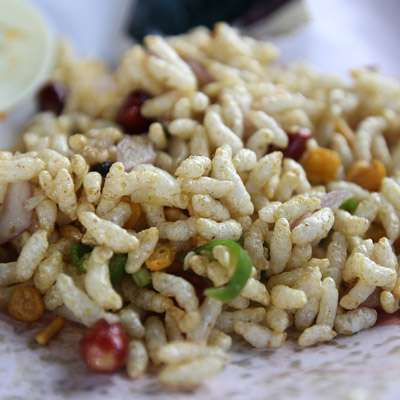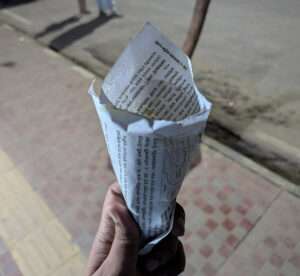Streetfood Chronicles: A Love Letter To Jhalmuri
Loving street food is a universal experience. Who doesn’t like to grab a quick bite while out on the street, or sharing a snack with your friends while you spill tea about your life, rant about your classes, or make your stand on who you think should win the election. So street food is not just a meal for your stomach, it’s an experience for your mind and soul. The scene of street food in Asia is proof of that. Most of you probably are familiar with some Japanese, Vietnamese or Korean street food items. Anime sure did paint a beautiful picture of having ramen from a cart on a river bank. Now remove that orange hair, make the 2D characters 3D, and replace the bowl of ramen with a plate of Fuchka, and you will have the scene of Bangladeshi street food.
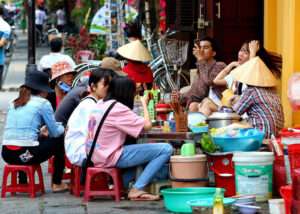
Bangladeshi people, be it rich or poor, young or old, LOVE street food. But unlike Japanese or other Asian countries, the street food culture of Bangladesh is dominated by snacks, not full meals. So the little free time people have in their daily rat race, they’ll spend munching on some street food. Fuchka, and Jhalmuri are the most popular street foods. I don’t think there is anywhere in the plain lands of Bangladesh where there will be a mile without a fuchka or jhalmuri stall. In specific areas kebab, noodles, halim, french fries, burger, and other foreign cuisines are served, but if you ask any Bangladeshi about street food, fuchka and jhalmuri are the first names that come to their mind.
Jhalmuri Yapathon
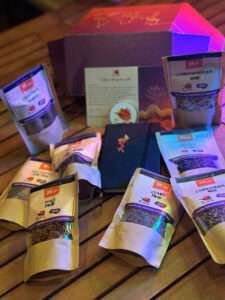 I am looking forward to the day when I yap about Fuchka, but today is not that day. Today I convey my love towards Jhalmuri. It is a simple dish. Jhal means spicy, and Muri is puffed rice. Jhalmuri is exactly that, spicy puffed rice. You can make the puffed rice spicy in any way you want, and it will be jhalmuri. Sometimes I make jhalmuri myself for a midnight snack. And my recipe is very simple, I take equal portions of Chanachur and Muri, and mix it using oil from Achar (pickle). Simple yet delicious. The nights where I am not feeling like a koala, I put a little more effort and add chopped onion, green chilli, and maybe use some sort of curry instead of pickle oil.
I am looking forward to the day when I yap about Fuchka, but today is not that day. Today I convey my love towards Jhalmuri. It is a simple dish. Jhal means spicy, and Muri is puffed rice. Jhalmuri is exactly that, spicy puffed rice. You can make the puffed rice spicy in any way you want, and it will be jhalmuri. Sometimes I make jhalmuri myself for a midnight snack. And my recipe is very simple, I take equal portions of Chanachur and Muri, and mix it using oil from Achar (pickle). Simple yet delicious. The nights where I am not feeling like a koala, I put a little more effort and add chopped onion, green chilli, and maybe use some sort of curry instead of pickle oil.
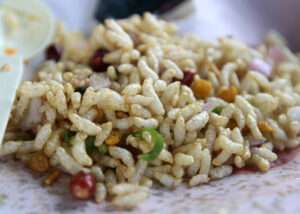
Crispy, spicy, delicious
The jhalmuri sold by mamas (we refer to the seller as mama or uncle) is not as lazily made as mine. But I will talk about them after I finish going down memory lane about Jhalmuri. And it is not just me, when Sunita Apu told me to write about Jhalmuri she started reminiscing about the times she and her friend used to eat Jhalmuri after hanging out. If you are a non-bengali reader, you can ask anyone you know from Bangladesh and they will tell you a similar story.
Back in 2015 almost everyday after school me and my friends would walk to Jahid Mama for jhalmuri. It was never hunger that took us there, and honestly his Jhalmuri was not even particularly good. But we would always go to him because of a kind of a kinship. And it’s a shared experience amongst Bangladeshi students. My university friends would show me their regular jhalmuri spot after school.
Jhalmuri is also a staple of parks or any other public space in Bangladesh. Or just places with a lot of foot traffic. So regardless of what you are doing, you can easily grab a quick cone of jhalmuri. Oh and did I mention the cool cones that Jhalmuri is served in? Nowadays some mamas use regular packets, or plates, but the iconic way of selling Jhalmuri is in a cone. And you use a small piece of card as a spoon.
The Art, and the Artists
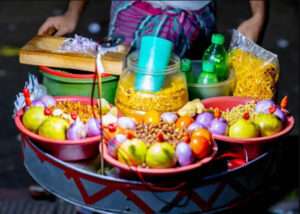
The instruments a jhalmuri mama works with
If the Jhalmuri is made with chola (chickpeas) rather than chanachur, it’s usually served in plates. Such is the way of Monjur Alam mama, the jhalmuri seller right next to my house. Well he is not just a Jhalmuri seller, he has some other food items too like noodles, chicken fry, chicken neck curry. But jhalmuri is his top seller. You can get regular muri mixed with chola and other spices. With that you can add chicken or duck eggs, or chicken liver. The recipes are his own creation. He and his family cooks everything daily, and he sells them until he finishes everything. And most of the time that makes him stay out till 4 am in the morning. His business is never bad, everyday I see customers coming and going way past midnight. A few days ago I went to see him at 4:30 am. He was about to close up, but served me one last plate. We chatted a little and he mentioned being in the business for 6 years. He started with a small tool selling only jhalmuri. Then he slowly expanded his business. And the night work is dear to him, he really likes the peace.
But most mamas sell during the day, because that is when the customers are plenty. Like Meherab mama. He is a traditional example of what a Jhalmuri Mama is. A simple toll with a huge bag of muri, and he mixes that jhalmuri with chanachur, chopped onion and chilli, a spicy oil and ghugni (a kind of daal mixture). Most importantly he sells his jhalmuri in a cone. Meherab mama has been in the business for 10 years. He starts selling at 1 pm, and chases the crowd. Sometimes he’ll be in front of a school, other times at a bazaar or a busy road. He’s smart and knows when and where his optimal customers are. His offerings are also simple, just 10tk or 20tk variants.
I dove right in and forgot to take a picture while it had Jhalmuri in it. But I didn’t forget to capture his magic at work.
Jhalmuri is not the most renowned part of Bengali cuisine, but its story is never ending. There is nothing quite like the magic of jhalmuri from the streets of Bangladesh. You might find branded packets of jhalmuri, but its true essence is irreplicable.
Jhalmuri is not the most renowned part of Bengali cuisine, but its story is never ending. There is nothing quite like the magic of jhalmuri from the streets of Bangladesh. You might find branded packets of jhalmuri, but its true essence is irreplicable.

